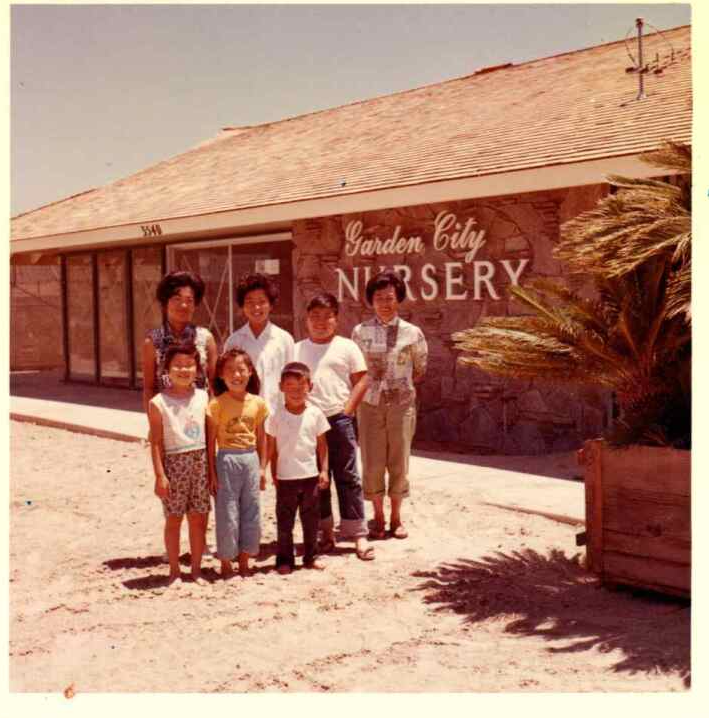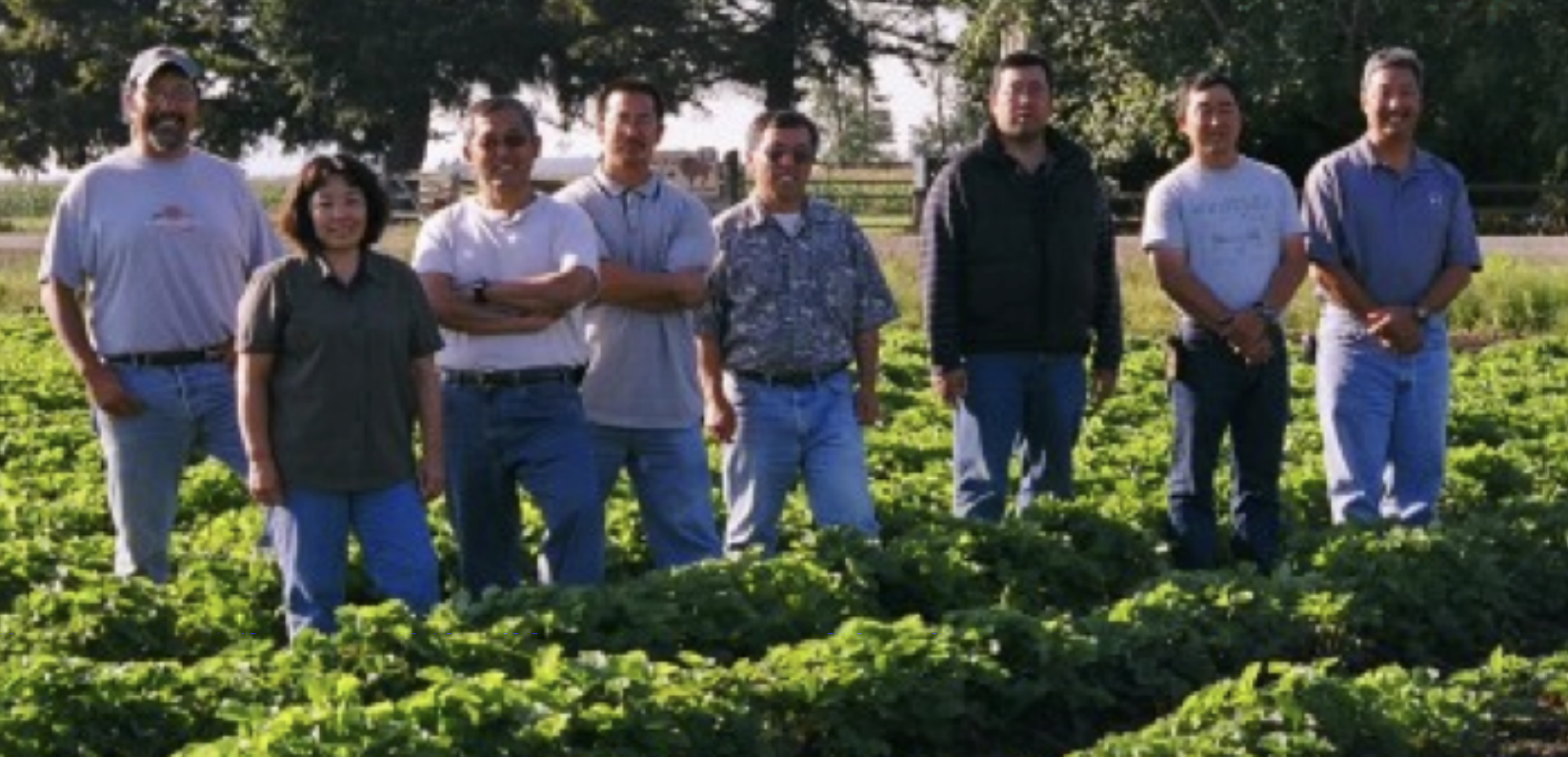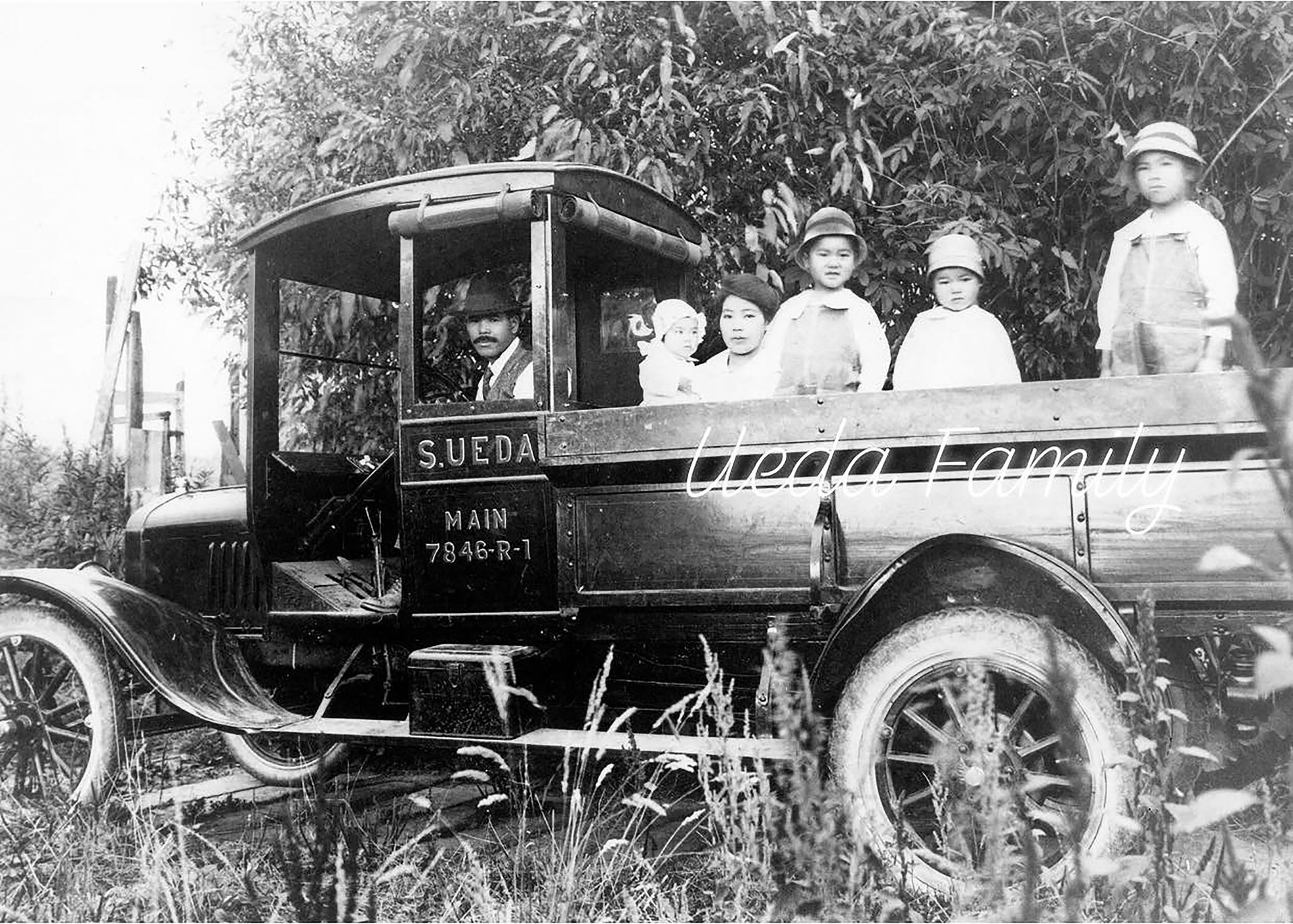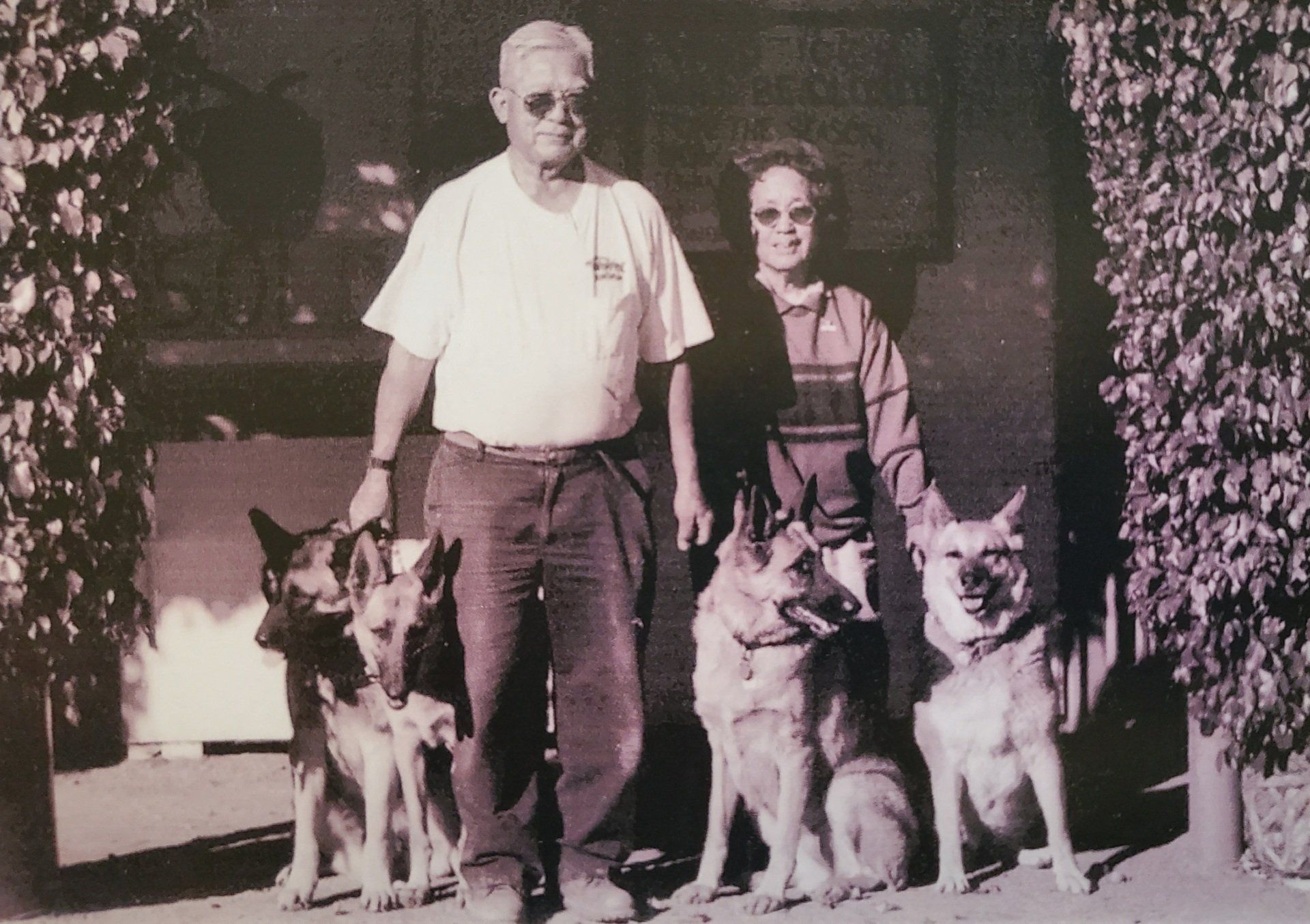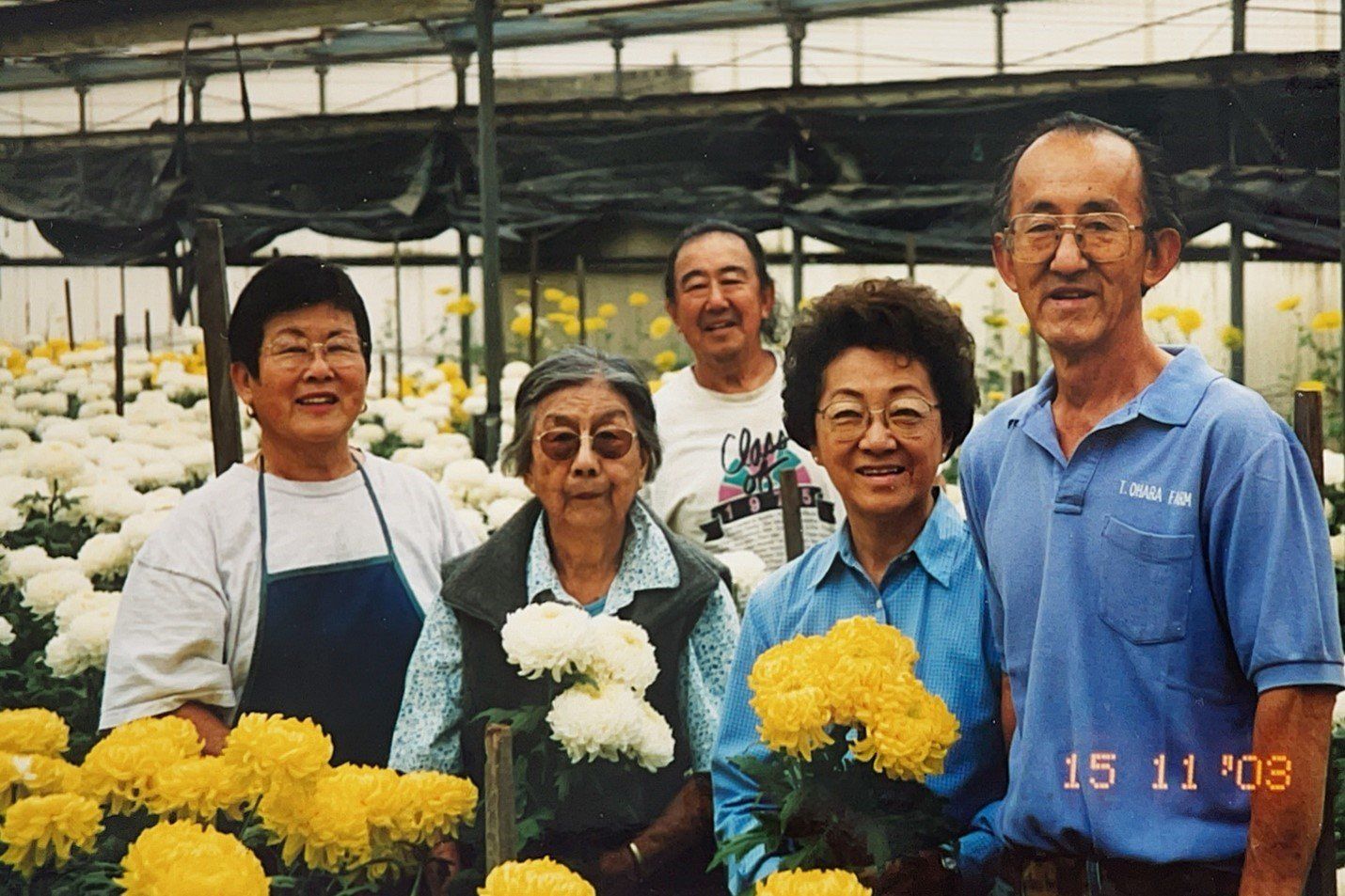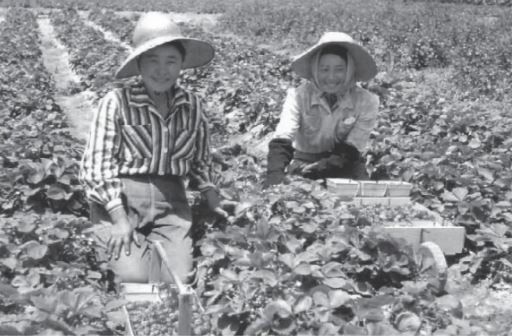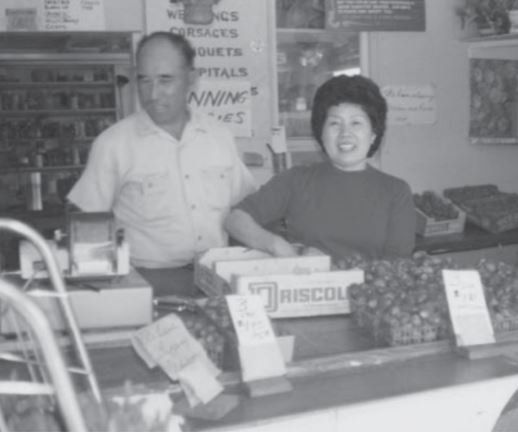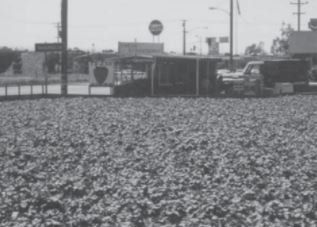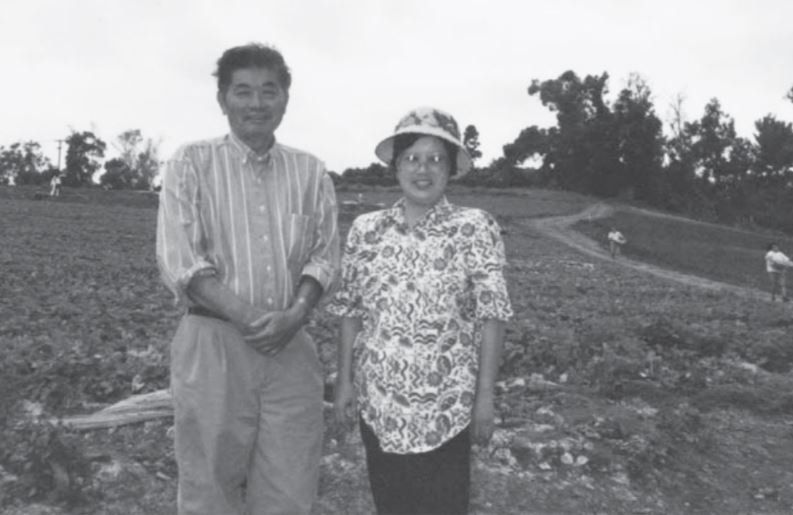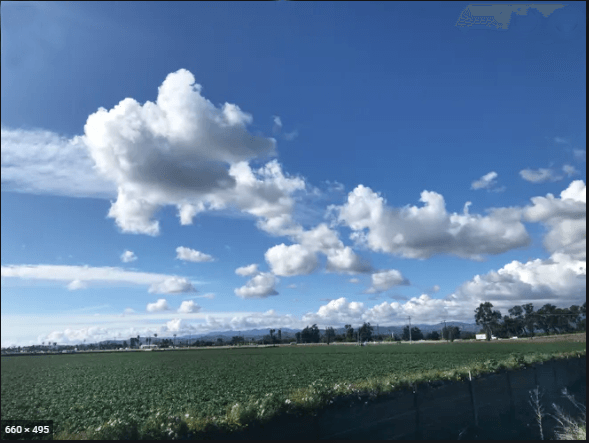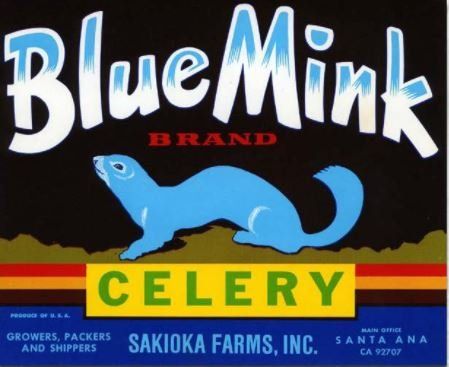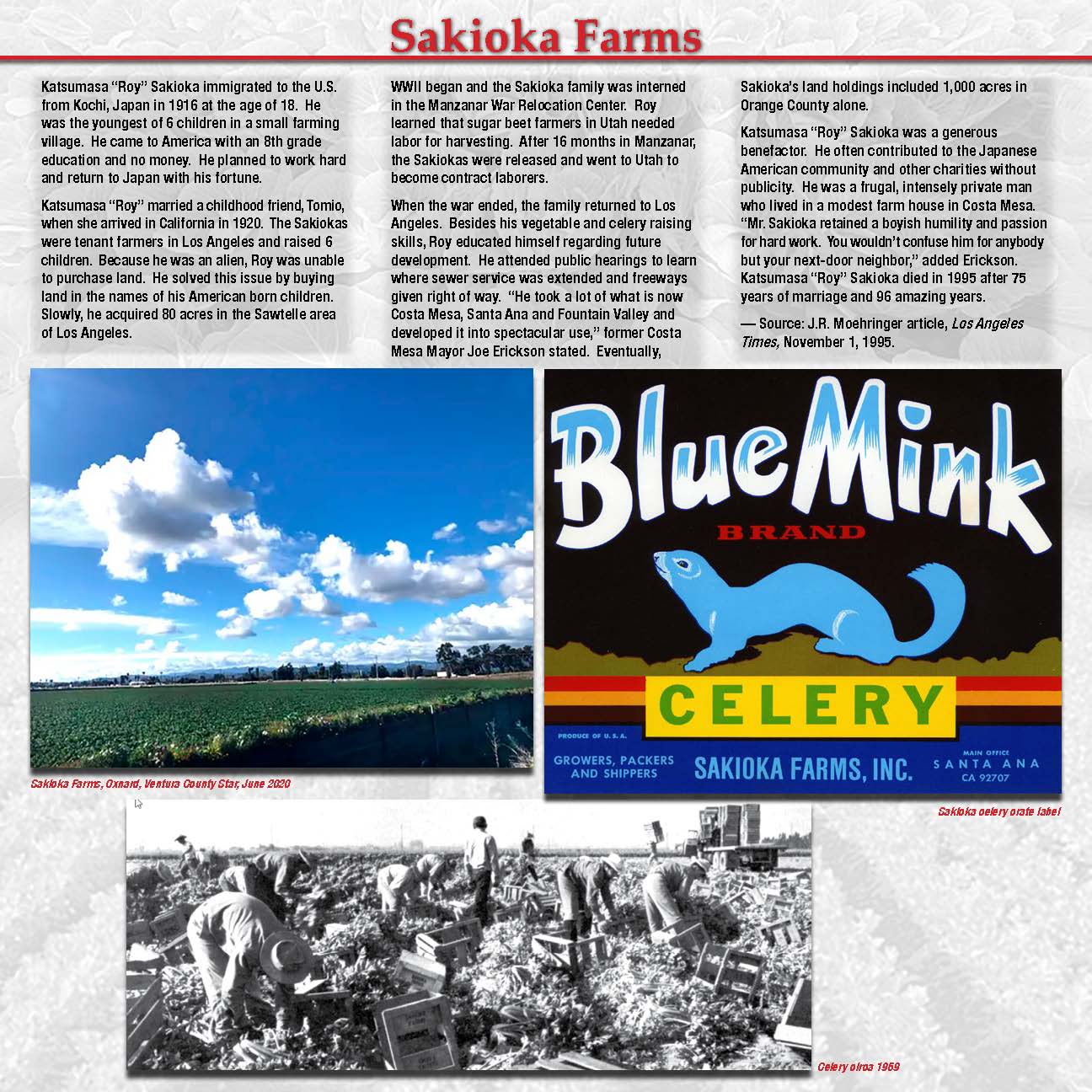Sakioka Farms
Katsumasa “Roy” Sakioka immigrated to the U.S. from Kochi, Japan in 1916 at the age of 18. He was the youngest of 6 children in a small farming village. He came to America with an 8th grade education and no money. He planned to work hard and return to Japan with his fortune.
Katsumasa “Roy” married a childhood friend, Tomio, when she arrived in California in 1920. The Sakiokas were tenant farmers in Los Angeles and raised 6 children. Because he was an alien, Roy was unable to purchase land. He solved this issue by buying land in the names of his American born children. Slowly, he acquired 80 acres in the Sawtelle area of Los Angeles.
WWII began and the Sakioka family was interned in the Manzanar War Relocation Center. Roy learned that sugar beet farmers in Utah needed labor for harvesting. After 16 months in Manzanar, the Sakiokas were released and went to Utah to become contract laborers.
When the war ended, the family returned to Los Angeles. Besides his vegetable and celery raising skills, Roy educated himself regarding future development. He attended public hearings to learn where sewer service was extended and freeways given right of way. “He took a lot of what is now Costa Mesa, Santa Ana and Fountain Valley and developed it into spectacular use,” former Costa Mesa Mayor Joe Erickson stated. Eventually, Sakioka’s land holdings included 1,000 acres in Orange County alone.
Katsumasa “Roy” Sakioka was a generous benefactor. He often contributed to the Japanese American community and other charities without publicity. He was a frugal, intensely private man who lived in a modest farm house in Costa Mesa.
“Mr. Sakioka retained a boyish humility and passion for hard work. You wouldn’t confuse him for anybody but your next-door neighbor,” added Erickson. Katsumasa “Roy” Sakioka died in 1995 after 75 years of marriage and 96 amazing years.
--Source: J.R. Moehringer article, Los Angeles Times, November 1, 1995
Celery circa 1959
Sakioka Farms, Oxnard, Ventura County, Star, June 2020
Sakioka celery crate label
